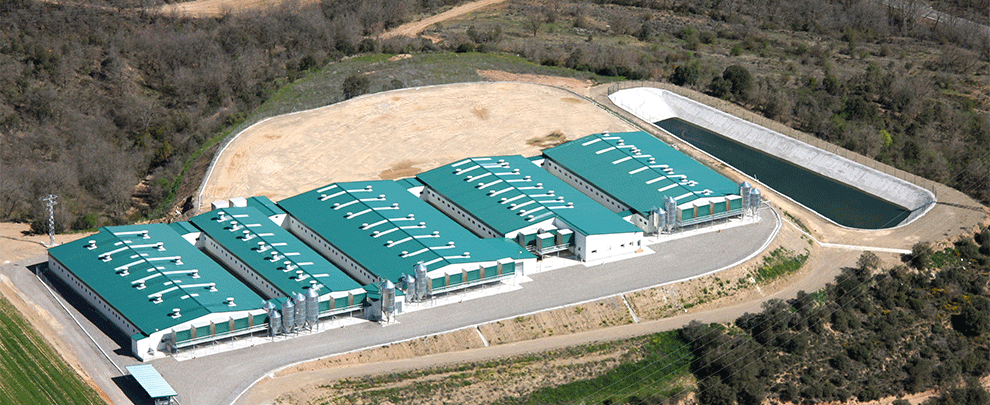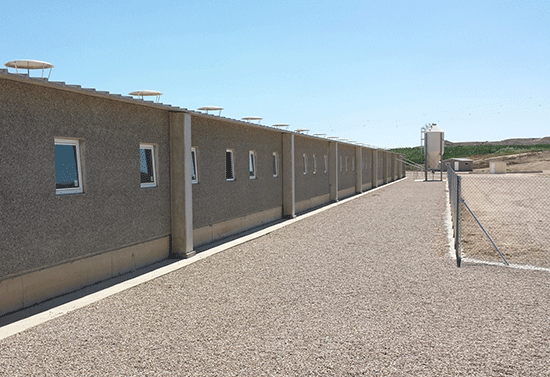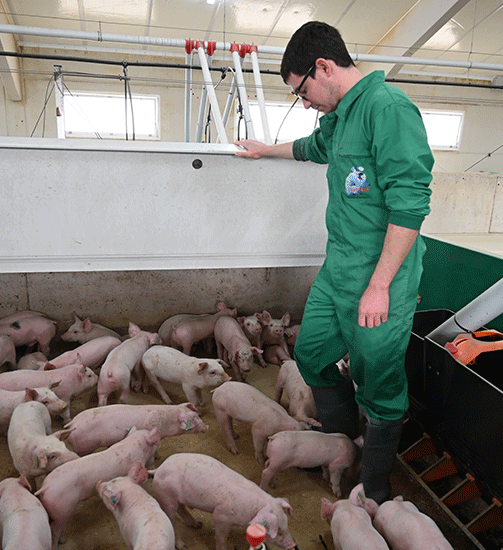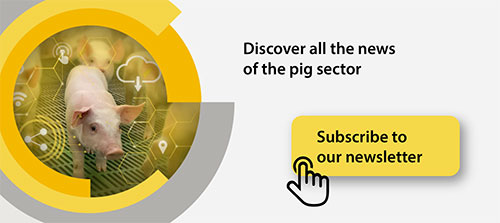Blog
Blog

Biosecurity, a key factor in pig farms
14th October 2025 - News
Today, the profitability and reputation of the swine industry depend as much on the quality of the final product as on the ability to prevent sanitary risks. In a globalized environment, where the movement of animals, people, and goods is constant, biological threats can spread rapidly and cause severe economic consequences. For this reason, swine biosecurity is no longer viewed as an occasional preventive measure, but as a comprehensive management strategy that protects animal health, business stability, and the overall sustainability of the production system.
What is biosecurity?
Swine biosecurity is the set of actions aimed at preventing the entry and spread of diseases within a farm. More than a sanitary obligation, it is a management tool that safeguards animal health, business profitability, and the sustainability of the production system. In practice, it involves controlling every movement of people, animals, vehicles, and materials that may pose a biological risk.
Why is biosecurity important?
Implementing biosecurity measures on pig farms is essential to prevent the introduction and spread of diseases such as PRRS or African swine fever, while reducing the need for antibiotics and ensuring the farm’s economic stability. Proper application protects against sanitary, economic, and reputational risks, while strengthening the producer’s image as a promoter of responsible production. Effective biosecurity relies on well-defined technical protocols, appropriate facility design, and, above all, the commitment of farm personnel, whose daily actions are crucial to preventing outbreaks and maintaining herd health.
What are biosecurity rules, measures, and protocols?
Biosecurity rules and protocols define how staff should act to minimize infection risks. They include routines such as access control, the use of farm-exclusive clothing, cleaning and disinfection of facilities and equipment, and the safe management of animals and materials. Consistent and coherent implementation turns prevention into an integral part of daily work.
External biosecurity
The first barrier against any sanitary threat begins outside the barn. Effective external biosecurity means controlling everything that enters the farm: people, vehicles, animals, and materials. In practice, this involves establishing a single access point, perimeter fencing, mandatory visitor registration, and disinfection systems such as footbaths and spray arches at entry points.
External biosecurity solutions
Advanced farms feature double-zone changing rooms where staff must shower and change completely before entering. Strict quarantine measures for replacement animals and designated areas for receiving and disinfecting feed or materials are also essential. These daily routines, standard in modern production, make a significant difference in preventing critical diseases such as PRRS or African swine fever (ASF).

The perimeter fencing is one of the most important measurements. Photo: Rotecna.
Internal biosecurity
Once inside, the goal shifts to preventing the spread of pathogens between batches and barns. Internal biosecurity is based on efficient work organization and daily cleaning routines. Implementing the “all-in, all-out” system, separating animal and personnel flows, and performing systematic cleaning and disinfection of equipment and surfaces are fundamental practices for maintaining a controlled environment.
Internal biosecurity solutions
These measures can be reinforced through the use of automated cleaning equipment and waste management systems that help reduce microbial load between production cycles. Effective internal control also requires continuous staff training to identify abnormal behavior or symptoms early and report issues before they develop into health problems.
Outbound biosecurity
Preventing pathogens from leaving the farm is just as important as keeping them out. Outbound biosecurity ensures that vehicles and equipment leaving the farm are completely clean and disinfecte, despecially those used to transport animals to slaughterhouses or other facilities.
Outbound biosecurity solutions
Designated loading areas with separated traffic flows and controlled washing and drying points help minimize the risk of cross-contamination. The management of manure, carcasses, and by-products must also follow strict protocols to ensure their storage and removal without contact with production zones. Together, these practices not only prevent disease transmission but also strengthen the farm’s reputation as a model of advanced and responsible swine biosecurity.

Staff training is key to detecting abnormal behavior. Photo: Rotecna.
Automation and biosecurity
In practice, automation in pig farms is not just a technological trend, it is a strategic tool for reinforcing biosecurity. Automated cleaning and disinfection systems keep barns consistently free from pathogens, reducing manual labor and human error.
For instance, barn-washing robots perform scheduled deep-cleaning cycles, ensuring that floors, feeders, and drinkers are uniformly disinfected. This saves time, reduces water and energy consumption, and minimizes staff exposure to chemicals and waste.
Automation also improves the management of animal and equipment flows, allowing coordinated cleaning between batches and maintaining separation between breeding and finishing barns. Combining these technologies with well-defined protocols creates a safer environment, optimizing both swine biosecurity and overall farm efficiency.
Staff training and awareness
In the daily routine of a pig farm, biosecurity largely depends on the human factor. Having protocols is not enough, staff must apply them consistently and effectively. This requires regular training on cleaning, disinfection, animal handling, and early detection of clinical signs.
Continuous education programs and practical drills help workers understand how their actions directly impact herd health and productivity. Promoting a culture of awareness encourages personnel to report irregularities, follow established protocols, and actively participate in outbreak prevention—turning theory into tangible results within the farm.
Environmental impact
Finally, swine biosecurity also has a direct impact on the farm’s environmental sustainability. Maintaining clean and healthy facilities reduces the need for antibiotics, contributing to the fight against antimicrobial resistance.
Likewise, implementing automated cleaning and waste management systems optimizes water and energy use, lowering the farm’s ecological footprint. Equipment such as air filtration systems not only limits pathogen entry but also improves indoor air quality, protecting animal health and reducing environmental impact. Altogether, these practices make swine production more efficient, safe, and sustainable.








